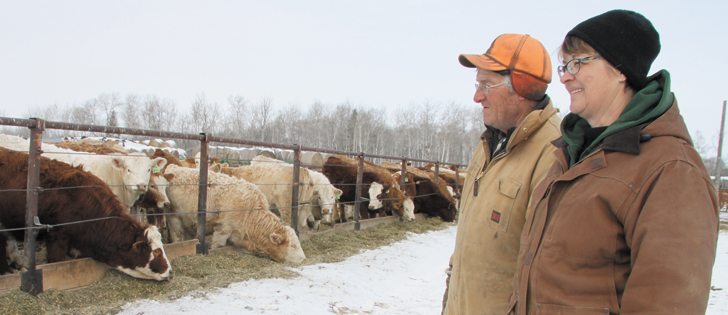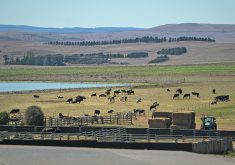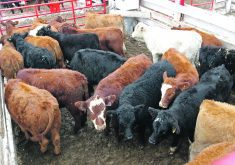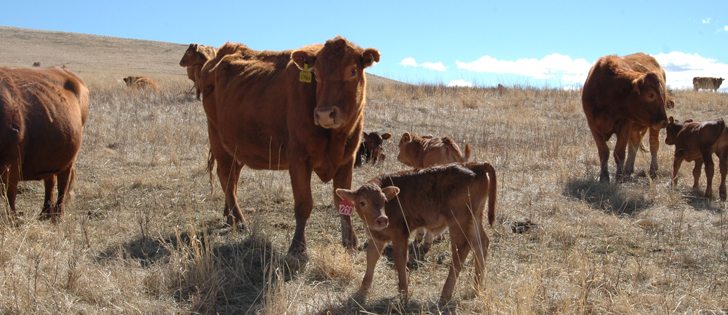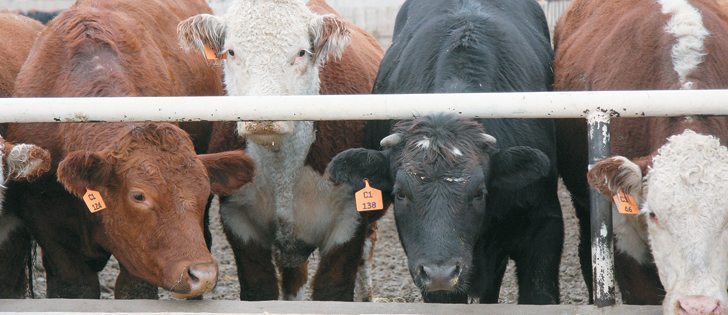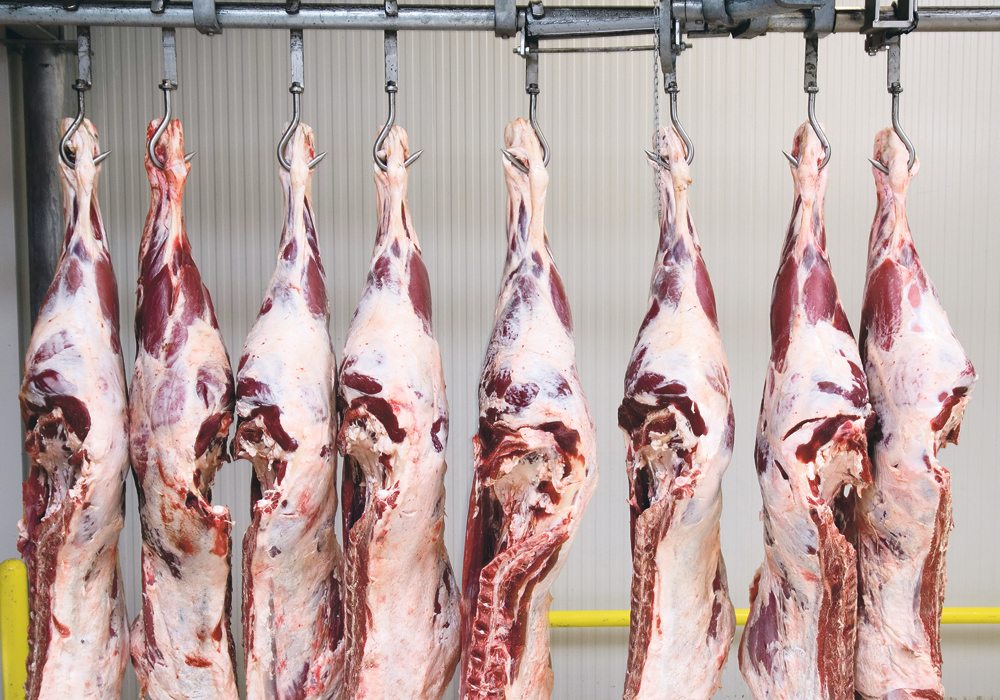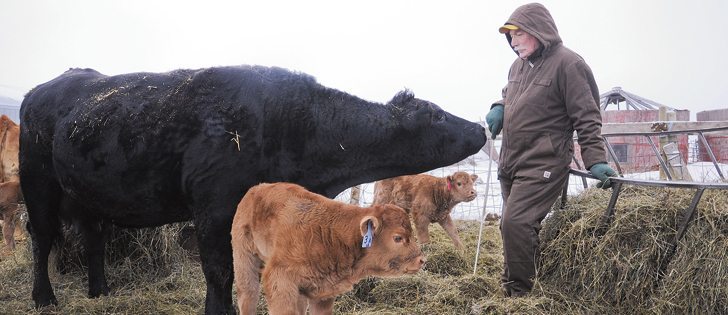Manitoba farm implants steers, but not heifers in an effort to respond to consumer demands for more natural beef
FISHER BRANCH, Man. — It’s not an absolute rule, but most farm decisions are based on money.
Producers will abandon the old way of doing things or adopt a novel technology if it makes the farm more profitable.
Betty and Robert Green have decided to break that rule.
The Greens raise half of their cattle without growth promotants, even though it doesn’t generate more money for their farm.
The Greens believe growth hormones for cattle are scientifically proven and there’s no health risk to consumers. However, Canadians are asking for beef without “added hormones,” so the Greens have adjusted their practices to meet the demand.
Read Also

Feds propose overhaul of chronic wasting disease control program
Chronic Wasting disease control program getting updated by Canadian Food Inspection Agency with feedback encouraged from producers.
“Sometime you don’t do it just for dollars. It’s being responsive to your consumers,” Betty Green said while standing in an alleyway between two feedlots on her farm north of Fisher Branch.
The Greens operate a 650 head cow-calf herd and also have a backgrounding operation on their ranch, where they raise Simmental-Charolais cattle.
The steers in their operation receive growth promotant implants, but the heifers do not. They make sure this happens by putting white ear-dangle tags on the steers shortly after birth and green dangle tags on the heifers.
The Greens have been doing this for four years.
“You don’t typically want to implant your heifers before you choose your breeding heifers, so it made sense to make them the default without,” Green said as the heifers stuck their heads through a cable fence and munched on a ration of barley and corn silage.
“And we’ve been part of research on implants, and the impact on steers is higher than it is on heifers.”
The heifers and steers are fed in separate feedlots, about 10 metres apart. The 310 steers had already been sold at the auction market by early March, so their lot was empty.
Green said the difference in performance between the two feedlots is noticeable. The steers typically look leaner and more muscular, while the heifers have more “flesh,” or fat.
The Greens retain some of their heifers and sell the rest as breeding heifers and to market.
However, the heifers won’t earn a premium price when they’re sold at auction marts in Manitoba, sometime in March.
“Nope, not typically,” said Green.
“There are buyers who are asking, specifically, whether they have been implanted or not. So that tells me some of their customers, feedlots, are buying non-implanted animals to try and hit a market.”
Seeing how Canadians pay more for ‘beef without added hormones’ at the grocery store, it seems odd that producers don’t receive a portion of that premium.
Rick Wright of Heartland Order Buying in Virden, Man., said premiums do exist but not at auction marts.
“I buy a lot of cattle (at auction) for major feedlots in Alberta and there is no discount for animals that have the growth promotants and there’s no premium that those that don’t.”
A percentage of the Greens’ heifers may wind up in “natural” cattle programs in Eastern Canada, but others may end up on feedlots in Alberta where they receive growth implants.
Cow-calf producers can earn a premium for cattle raised without growth promotants if they finish the animals on the farm and sell directly to consumers. They could also sell feeder cattle to a company that specializes in natural beef.
“There are a lot of (Canadian) ranchers raising cattle without antibiotics, and they aren’t im-planting on the farm,” said Vicky Horn, producer liaison with Spring Creek Ranch, which produces beef without antibiotics or added hormones in Alberta.
“(But) if you’re not keeping control of the animal all the way until it gets to the consumer, then you are losing that value.”
Spring Creek buys feeder cattle from producers who meet their program standards and pays more for those cattle.
“It does cost more to raise animals this way. It is (important) to get that premium back to rancher,” Horn said.
“The premium is going to depend on the type of cattle … and where they fit into our inventory.”
Many producers like selling cattle at the auction mart because it offers price discovery. In contrast, when selling direct to a buyer, the price may be fair market value or could be higher or lower than the market price on that day.
Regardless, Spring Creek is willing to pay a premium because domestic demand for natural beef is booming.
“There is huge demand…. We’re not filling the contracts that we have…. We definitely need more cattle coming into our program,” Horn said.
“The feedback we’re getting from the processing side is they could sell everything we bring to them.”
The price premium is necessary because cattle ranchers are in the business of producing and selling pounds.
“I’m not picking a side on whether the growth promotants are good are bad,” Wright said.
“But the more pounds you can produce, the more money in your pocket.”
The Greens’ heifers may have lower feed efficiency, but sales of their breeding heifers help offset the feeding cost.
“Is there a loss? Yes,” Green said.
“But the other side is … a lot of people that buy breeding heifers don’t want them implanted…. (So) they’ll bring a little bit more (money).”
While there isn’t a premium at the auction mart right now, that could change in a few years under the Canada-EU free trade deal.
Rumensin and natural beef
- It can be difficult finding cattle in Canada that are raised without growth promotants or antibiotics. It’s a particular challenge with antibiotics because the Canadian Food Inspection Agency classifies ionophores as an antibiotic.
- Ionophores are feed additives that increase feed efficiency and rate of gain.
- “Rumensin is considered an antibiotic,” said Vicky Horn, producer liaison with Spring Creek Ranch in Alberta. “Rumensin is often in feed pellets that they (producers) are using in supplements. That would be the biggest prophylactic antibiotic out there…. (But) a lot of people don’t think of it as an antibiotic.”
Contact robert.arnason@producer.com


